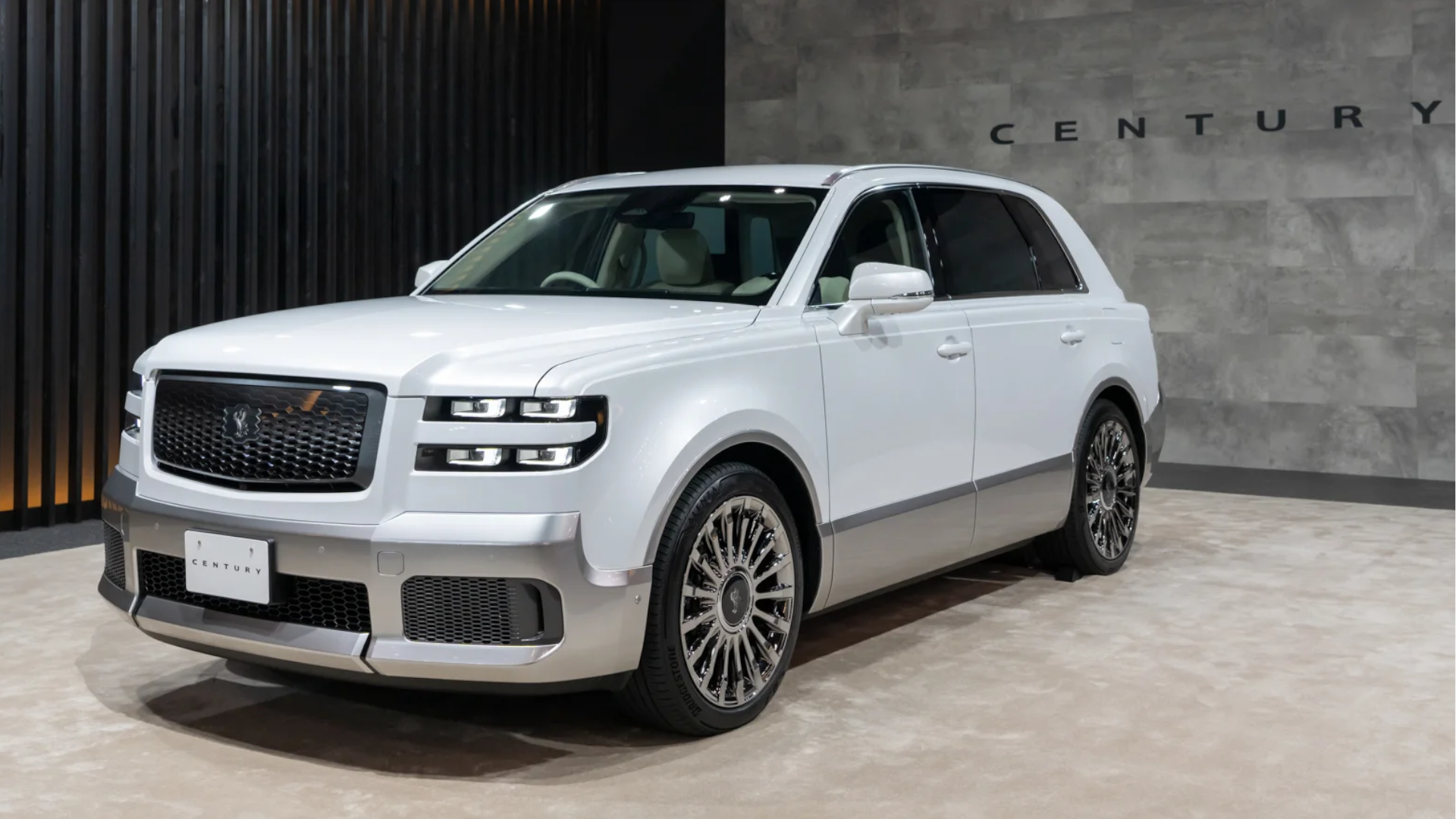

Toyota’s decision to apply its most regal nameplate to an altogether different kind of vehicle, in the form of the Century SUV, certainly came out of left field. Company chairman Akio Toyoda thinks it’s the right move to attract younger buyers to the Century name, formerly reserved for the golden oldies of Japan’s business world. I’m not so sure.
As covered by Motor1, Toyoda spoke of the new Century’s appeal to the company’s own chronicle, the Toyota Times. “This is the top premium chauffeur-driven car not just within Toyota but in Japan, said Toyoda, adding, “I think this [SUV] model will also suit younger people and those who previously felt that a Century was not for them,” said Toyoda. It’s a huge shift for the Toyota Century, which has been sold as a sedan since its introduction in 1967.
Far from base speculation, the comments stem from Toyoda’s own observations of the company’s executive parking lots. Once upon a time, the lot was full of “nothing but Centuries,” in the words of the former CEO, but these days it’s a more varied mix. Younger executives have moved away from the sedan, with many of Toyota’s elite choosing to get around in Toyota Alphard or Vellfire minivans these days. Indeed, this fact may have inspired the sliding rear door available on the Century SUV.
To an extent, Toyoda’s position makes sense. SUV sales have skyrocketed over the past three decades. For many brands, the rise of the crossover has made the business case for traditional sedans and wagons entirely defunct. Add on the fact that the Century sedan, typically driven by late-career executives and Japan’s aging royals, has kind of a stuffy image in its home country.

The question is whether putting the Century name on an SUV can shift the name’s existing staid and stately perception. Symbols of wealth and prestige are always popular, to be sure, but it’s tough to see Toyoda’s vision of young buyers flocking to the car. It’s a comfortable, large SUV that lacks the visual punch or edge that would let it star in a rap video, for one thing. Meanwhile, the sliding door similarly telegraphs “ease of entry” more than it says “bachelorette party bus.”
By and large, each new generation has preferred to get away from the tastes and trends of its parents. It’s obvious in everything from the clothes they buy to the cars they drive. The generation that rode in station wagons as kids would grow up and abandon them for SUVs. It’s easy to imagine that the SUV itself could become a hackneyed “fogie” car down the track.

Indeed, this trend may already be revealing itself, ever so slightly. In 2019, a study from Nissan showed that younger millennial and Gen Z buyers were more interested in sedans than buyers of older generations. Yes, SUV sales are still going gangbusters, but there are two reasons behind that. First of all, regular cars have started vanishing from the market; and the second is that the vast majority of new car buyers are older. This is a natural result of wealth distribution in society today. Younger generations have weaker buying power, and therefore don’t have the same impact on product decisions by major automakers.
Toyoda’s statement bears consideration, and his opinion carries more weight than most given his success at the top of the automotive game. At the same time, it’s a dangerous game to assume what the youth are into. The story of executives missing the mark with younger buyers is a tale as old as time. In any case, it’s easy to imagine the kids going crazy for the convertible Century SUV, so maybe Toyota should just go ahead and build that one already.
Got a tip? Let the author know: lewin@thedrive.com